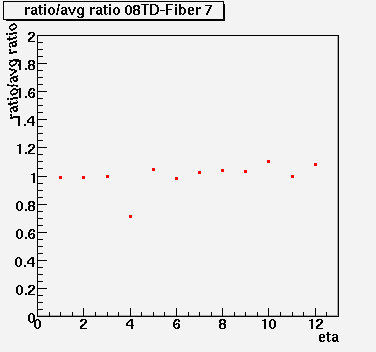
Each of the phi bin graphs below, with the exception of Fig. 1: 08TD-Fiber 7,were made after the chi-squared distribution was plotted for each fiber (See link 6). The chi-squared distribution was used to sort through all the ratio graphs in Link 4, in an attempt to identify problem areas. The phi bins with a chi-squared above 0.02 have been plotted below in Fig. 2 and are considered abnormal. A normal phi bin would have ratio/(avg ratio) around one for all eta. The graphs in Fig. 3 are the result of a modified chi-squared program that looks for ratio/(avg ratio) for etas in a particular phi bin that are not part of a smooth curve - that is, a particular eta that for some reason is recieving less (or more) light than the average value of its neighboring etas.
Figure 1: This is what a broken tile would look like (08TD04), one eta bin is getting approximately two-thirds the amount of light the other eta bins are getting (evidence that one of the three layers the fiber is sending light to is not working properly). However, 08TD04 is a tower that is likely having a negative pedestal (or unknown pedestal) and this affects the ratio! Because of this, the following graph is not clear evidence that there is something wrong with a tile in 08TD04.

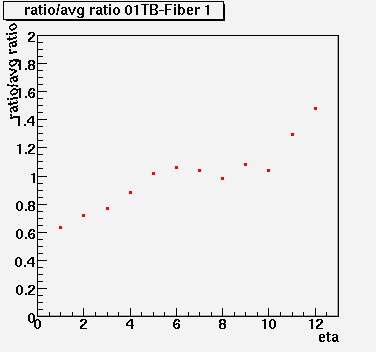
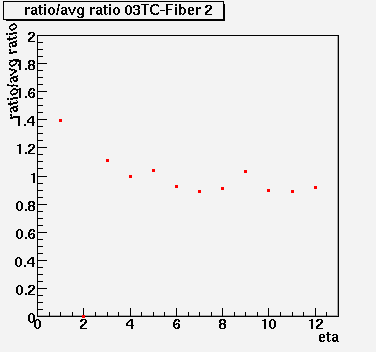
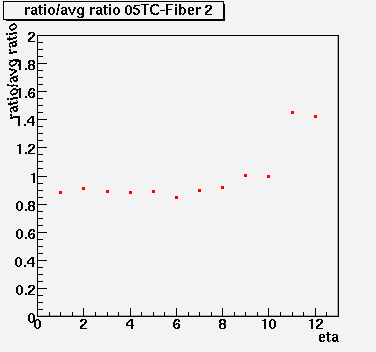

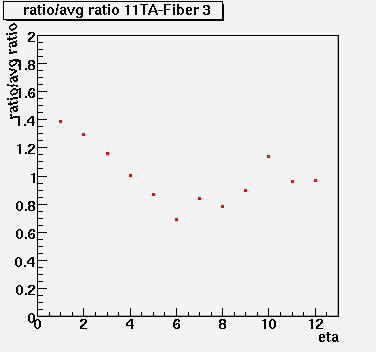

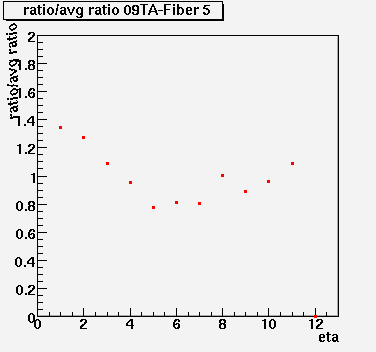
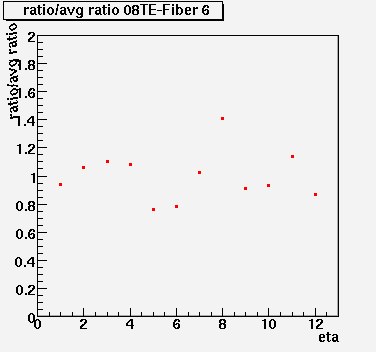
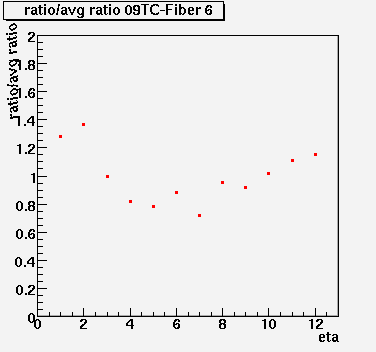
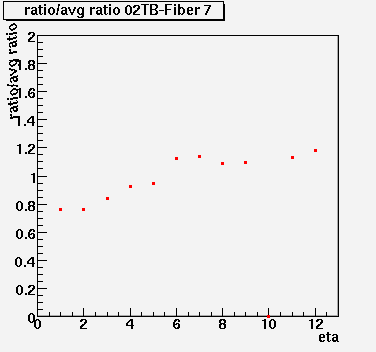
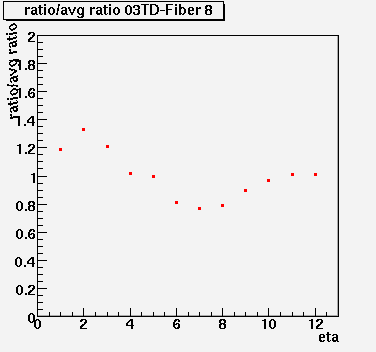
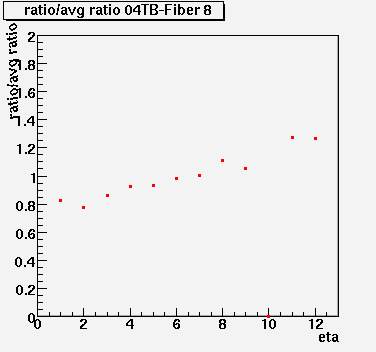
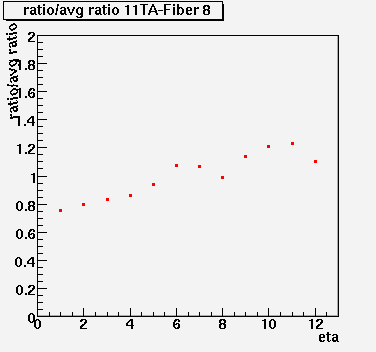
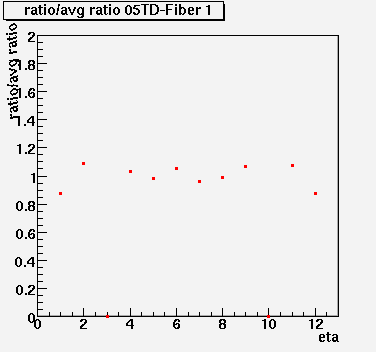
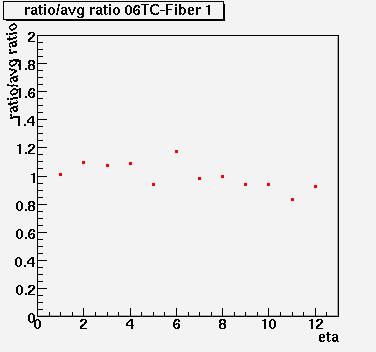
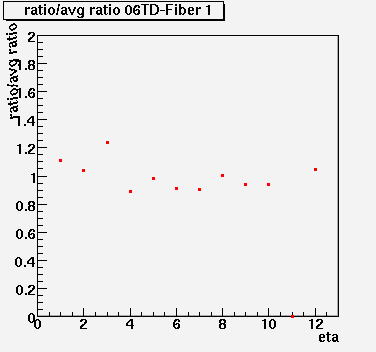
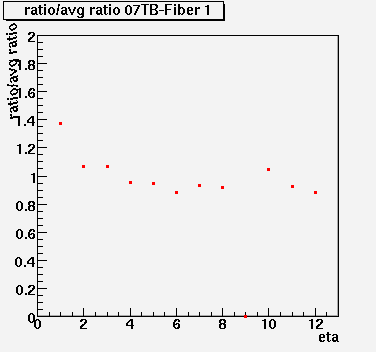
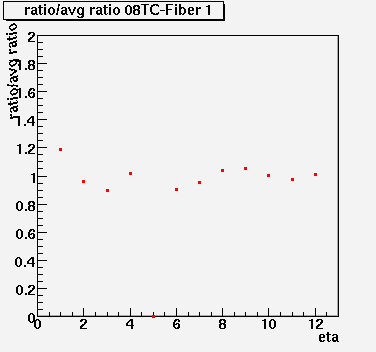
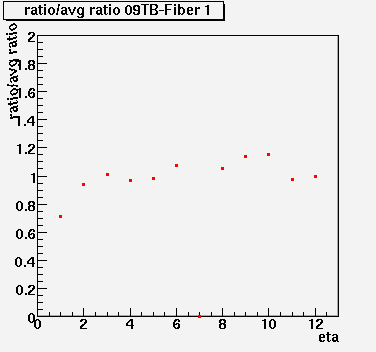
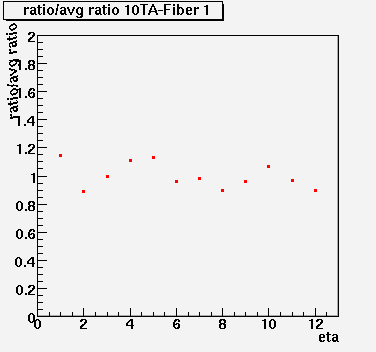

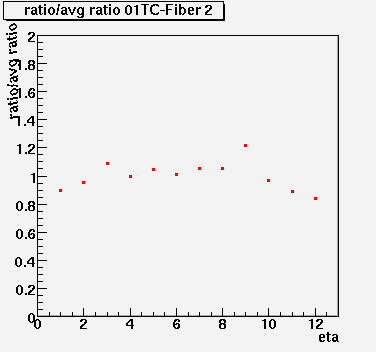
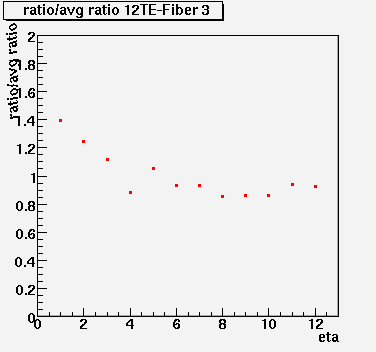
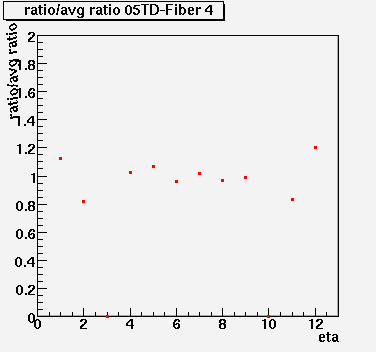
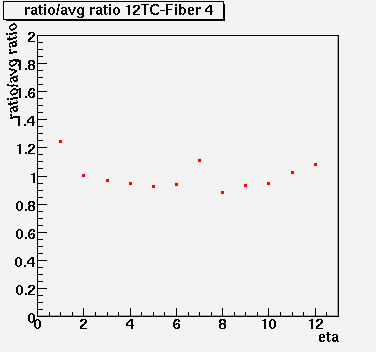
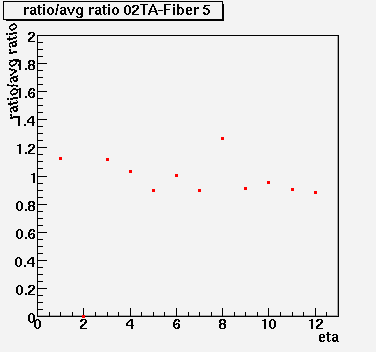
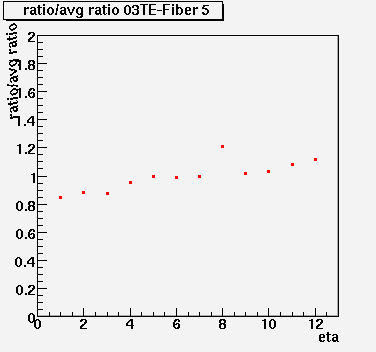
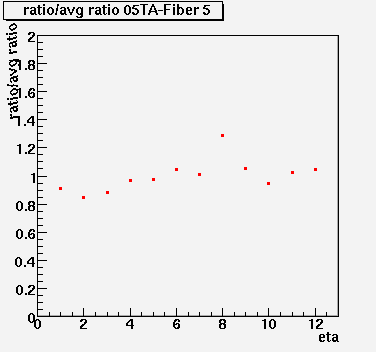

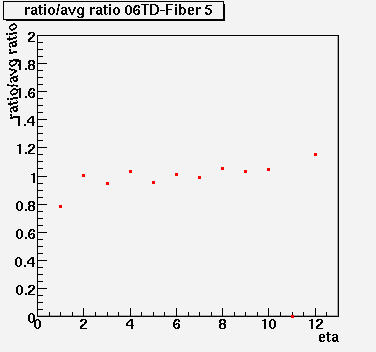
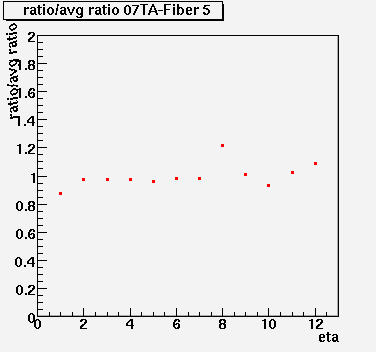
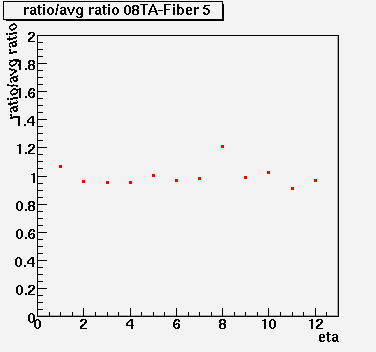

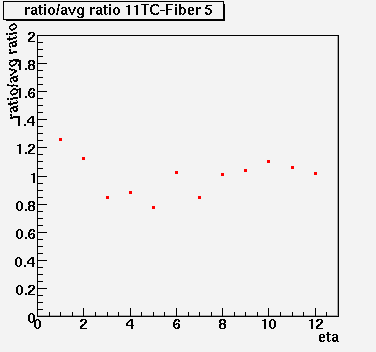
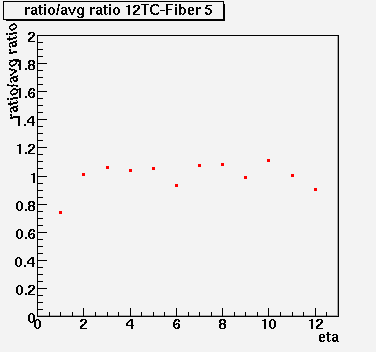
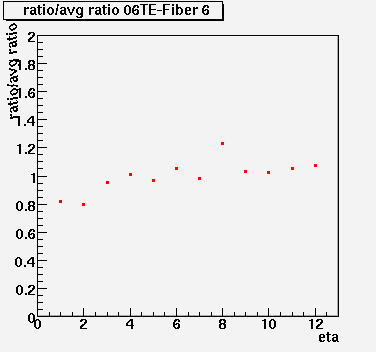
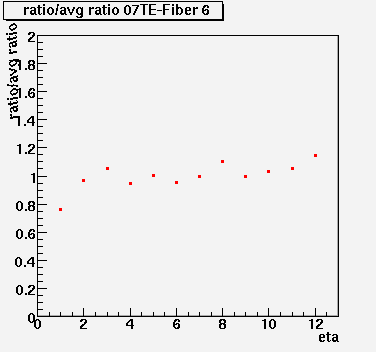

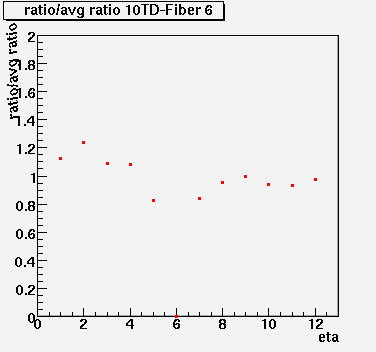
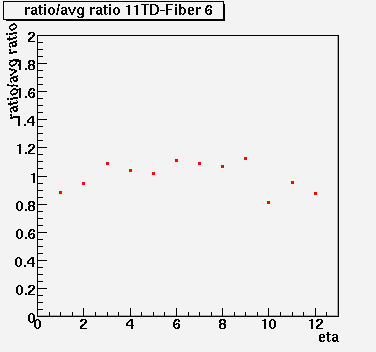
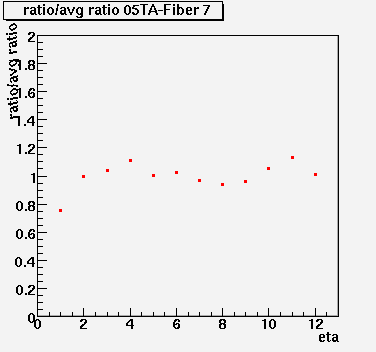
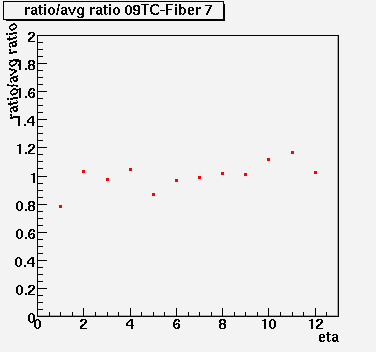
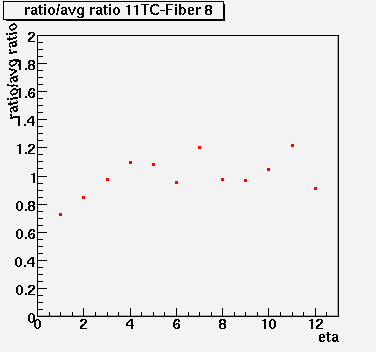
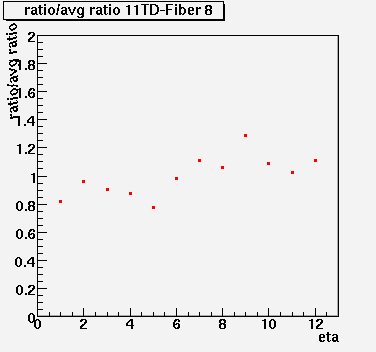
Phi Eta Difference Fiber 1: 05TD eta: 1 diff is 0.210149 05TD eta: 2 diff is 0.210149 05TD eta: 11 diff is 0.203821 06TC eta: 6 diff is 0.212954 06TD eta: 3 diff is 0.276682 06TD eta: 4 diff is 0.222232 07TB eta: 1 diff is 0.304218 08TC eta: 1 diff is 0.226067 09TB eta: 1 diff is 0.227624 10TA eta: 1 diff is 0.253882 Fiber 2: 01TA eta: 8 diff is 0.221047 01TC eta: 9 diff is 0.204480 03TC eta: 1 diff is 0.392869 03TC eta: 2 diff is 0.250528 05TC eta: 10 diff is 0.229308 05TC eta: 11 diff is 0.241964 Fiber 3: 11TA eta: 10 diff is 0.210104 12TE eta: 4 diff is 0.200899 Fiber 4: 05TD eta: 1 diff is 0.304446 05TD eta: 2 diff is 0.304446 05TD eta: 11 diff is 0.370959 12TC eta: 1 diff is 0.237051 12TC eta: 7 diff is 0.200398 Fiber 5: 02TA eta: 7 diff is 0.235624 02TA eta: 8 diff is 0.359195 03TE eta: 8 diff is 0.204740 05TA eta: 8 diff is 0.253332 06TA eta: 8 diff is 0.334883 06TD eta: 1 diff is 0.222155 07TA eta: 8 diff is 0.220557 08TA eta: 8 diff is 0.225574 10TA eta: 10 diff is 0.212114 11TC eta: 6 diff is 0.216653 12TC eta: 1 diff is 0.268166 Fiber 6: 06TE eta: 8 diff is 0.221721 07TE eta: 1 diff is 0.208168 08TE eta: 8 diff is 0.440865 08TE eta: 9 diff is 0.259631 08TE eta: 11 diff is 0.240142 09TA eta: 5 diff is 0.215204 09TC eta: 2 diff is 0.226742 09TC eta: 7 diff is 0.203462 10TD eta: 5 diff is 0.254422 11TD eta: 10 diff is 0.226887 Fiber 7: 05TA eta: 1 diff is 0.240256 08TD eta: 4 diff is 0.305848 09TC eta: 1 diff is 0.243938 Fiber 8: 11TC eta: 7 diff is 0.238319 11TC eta: 11 diff is 0.235444 11TD eta: 9 diff is 0.215131
For Fiber 5: 2TA,5TA,6TA,7TA,8TA, and 3TE all have eta=8 higher than other etas
A lower ratio/avg ratio for eta=1 is likely explained by the physical layout of the fiber. As the fiber was
attached to a megatile, it was more likely to twist at eta=1 because the fibers were glued in starting at eta=12.
So the scratch in the fiber at eta=1 is not lined as well. Thus it is likely not receiving as much light as higher eta.
A trend of fairly linear, increasing ratio/avg ratio is likely from a twisted fiber in a megatile. Again,
as the fibers were glued in beginning with eta=12, it is likely to have the scratch in the fiber that carries
the laser light to each tile in a megatile aligned better than at eta=1. Therefore, eta=12 appears to be
receiving the most light, and a twist in the fiber would cause etas preceding 12 to have the scratch misaligned
more drastically as eta decreases to 1.
Ratio/avg ratios that deviated from one drastically (as in ratio above 2 or equal to zero) show up as zeros on the graph.
If a zero was encountered as a neighbor to the eta for which the difference was calculated, the next (or previous
depending on location) eta bin was used to find average of neighboring etas. For eta=1, eta=2 was used to find
the difference, and for eta=12, eta=11 was used to find the difference.